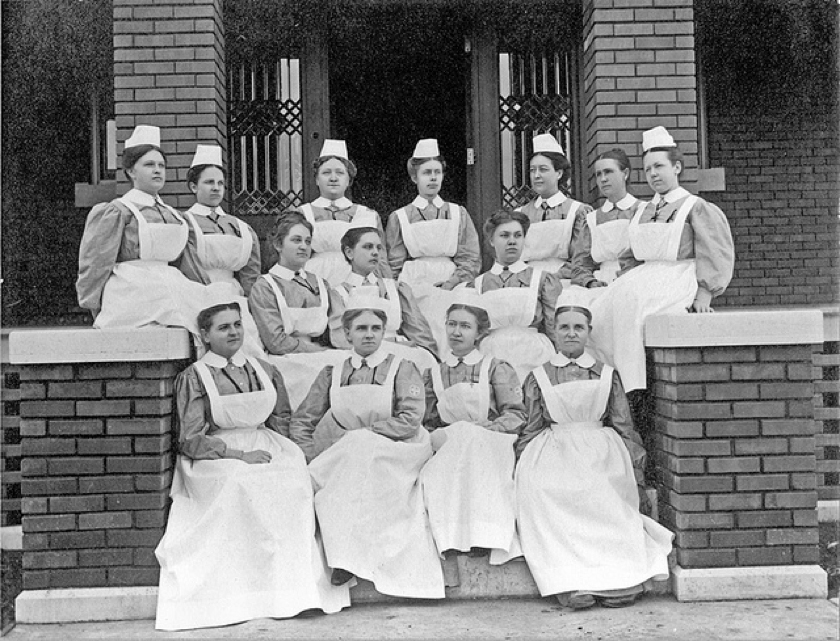|
In 1900 the 18 year old Frieda Kaufman (1883-1944) from Basel, Switzerland attended a large gathering of Mennonites in Freeman, South Dakota where she proposed that Mennonites in North America begin a Nursing School and Hospital. Three years and a few months later in 1903 Sister Frieda Kaufman, at the age of 22, Kaufman was named the director of Bethel Deaconess Hospital and Nursing School in Newton, Kansas. Three other Sisters, Ida Epp, Catherine Voth and Martha Richert joined her as the initial instructors. Within seven years Mennonites founded 10 Deaconess Hospitals and Nursing schools: 5 in Europe and 5 in North America. The Deaconesses were ordained and served in both health and spiritual capacities. Churches supported these hospitals as their mission and patients paid only as they were able. One of the founders, Martha Richert, left for India in 1909 where she began the first hospital devoted to leprosy patients. The Deaconess Sisters did not marry, lived on the premises, had to wear uniforms and were on call 24/7 through their working years and then retired on-site. Only unmarried, female students were admitted to the nursing programs. In the 1950s many of the hospitals affiliated with other medical providers and by the 1970s the Deaconess movement came to an end. This “Sisters” movement was patterned after Florence Nightingale’s work in the Ukraine during the Crimean War of 1853-1857. During that war Mennonite schools, churches and hospitals in the Crimea and Ukraine served as emergency medical wards for many of the victims. From Florence Nightingale to Sister Kaufman, a significant number of Mennonite women in Europe were inspired to enter health care work and the Sisters movement developed from that. Surely the Lord would say of the Deaconesses, “well done you good and faithful servants.”
Comments are closed.
|
DownloadThe Living Mirror: Archaeology of Our Faith
Archives
December 2018
|
||||||
|
* = login required
|
Visit425 S. Central Park Blvd.
Chicago, IL 60624 |
Contact |


 RSS Feed
RSS Feed
